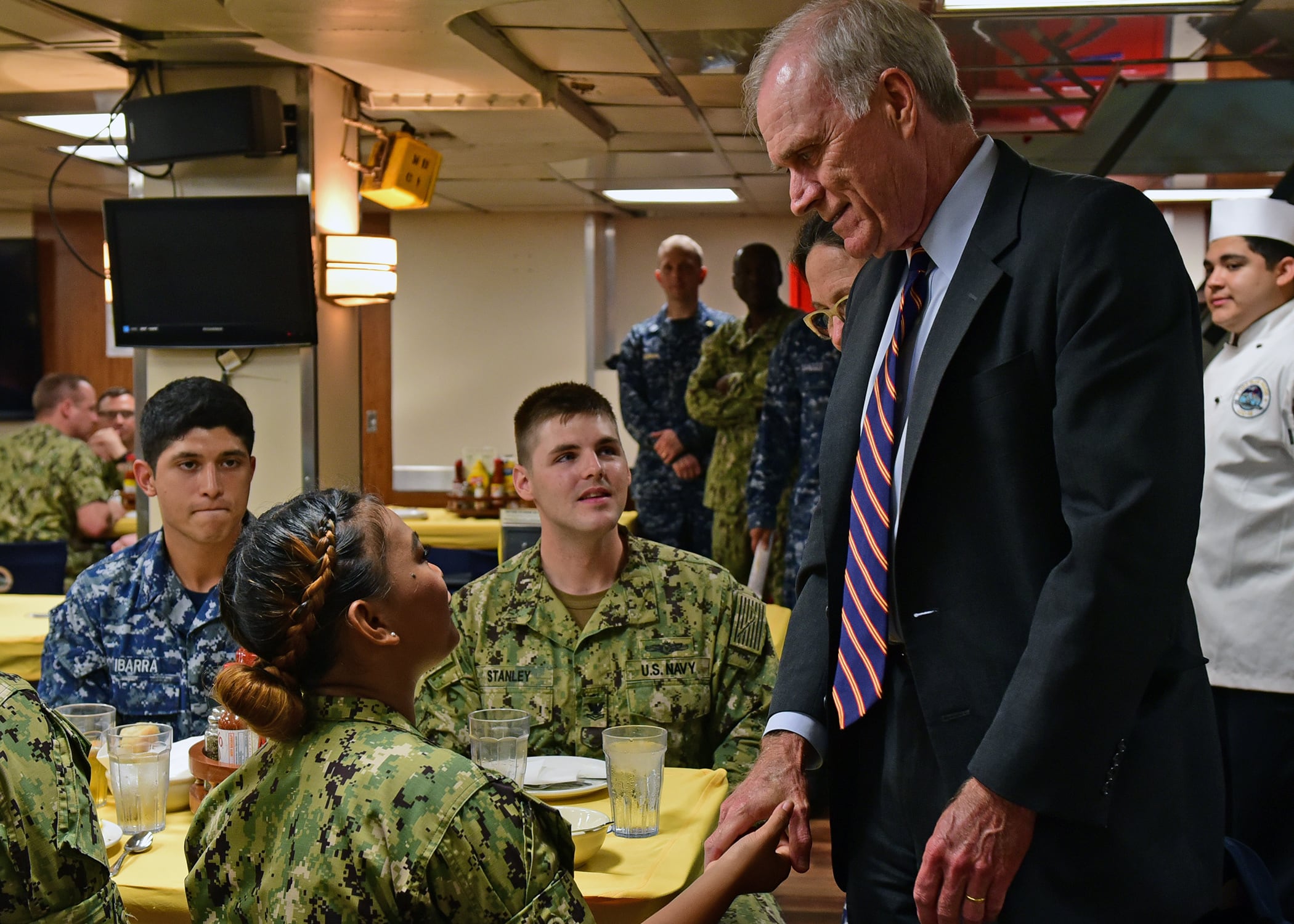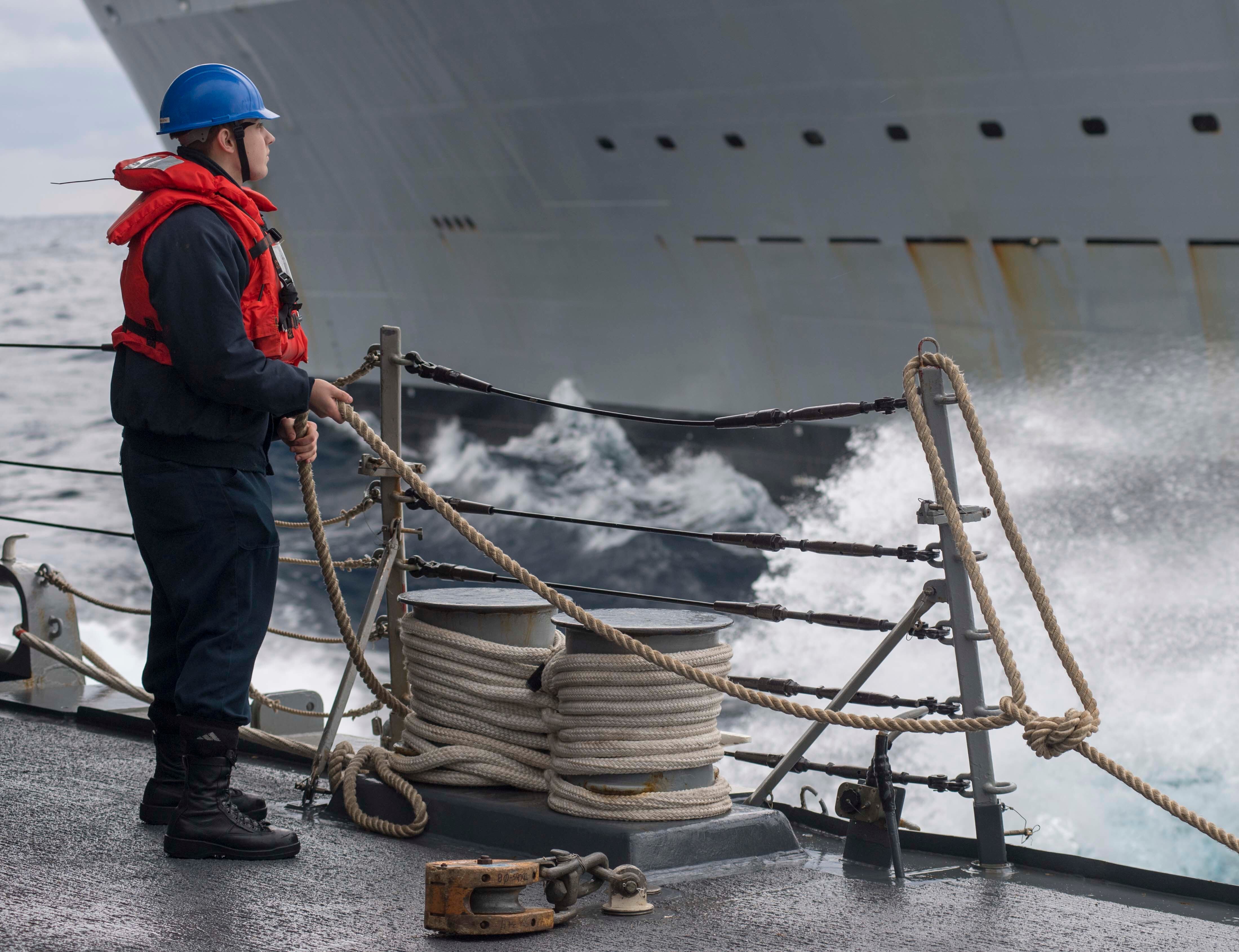After years of being overworked and underfunded, Secretary of the Navy Richard V. Spencer says Congress gave the service enough cash to remedy its readiness woes and now it’s time to “increase the velocity of change.”
“The two-year budget has enabled us to set the environment for change,” Spencer told a packed auditorium at the Surface Navy Association’s annual convention on Wednesday. “We have the money, ladies and gentlemen, but one thing that money can’t buy is time and we don’t have time to do business as usual.”
Spencer called on the surface sailors and their officers gathered in Arlington, Virginia, to “deliver the Navy the nation needs with a true sense of urgency. And I mean that.”
"We have a very dangerous world out there. The world is changing dramatically. We cannot operate under the adage of ‘business as usual.’ It will not work.”
RELATED

Irked by how long it takes to deliver high technology to the fleet and doubting the Navy can develop the next generation of wonder weapons from scratch, Spencer urged the audience to find products and services already stocked by the private sector and use them.
“It’s called ‘R&D,’” he said. “Rip it off and deploy it.”
Although he didn’t utter the names of the guided-missile destroyers Fitzgerald and John S. McCain and the 17 sailors killed in a pair of 2017 collisions with commercial vessels in the 7th Fleet’s area of operations, Spencer alluded to his somber speech at last year’s confab, when he reminded the Navy about the times it had “fallen short” in an era punctuated by a high tempo of operations and “diminishing resources.”
“Our people were not receiving the training, leadership and opportunities they needed to be effective,” Spencer said. “The civilian leaders of the military should be the circuit breakers when we are being asked to do more with less and optempo increased… Something has to give and there was no circuit breaker. That’s all I’m going to say.“
Spencer didn’t name the Navy admirals and their overseers who made “well-intentioned decisions” in “the spirit of doing more with less” but said that they “produced unintended but yet completely unacceptable consequences.”
While the Navy changed course, increasing military competition with rising powers should make the service’s leaders move forward faster to transform their forces, leaving them more lethal, durable and nimble — and then make those reforms permanent, he said.
“We committed ourselves as a department to restoring readiness, lethality across the force,” Spencer said. “We started migrating to a true, continual learning organization. And we continue that migration as we will for the foreseeable future.”
RELATED

The next task is to get manning levels at sea and ashore to match what personnel are asked to do, said Spencer, a Marine veteran who toiled on Wall Street before serving on the Pentagon’s advisory group — the Defense Business Board — and the Chief of Naval Operations Executive Panel.
He mentioned no proposed numbers to rebalance manning levels, but indicated the Navy had “completed the first comprehensive manpower requirements study that takes into account the true workload of our ships both underway and in port.”
“This study is already being used to improve the manning on our ships, including the addition of personnel to our (guided-missile destroyers), and we’re planning on introducing staffing changes on all other classes of ships in the near future," Spencer said.
Mark D. Faram is a former reporter for Navy Times. He was a senior writer covering personnel, cultural and historical issues. A nine-year active duty Navy veteran, Faram served from 1978 to 1987 as a Navy Diver and photographer.





